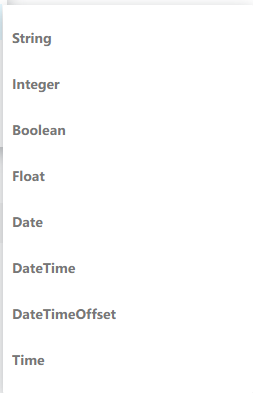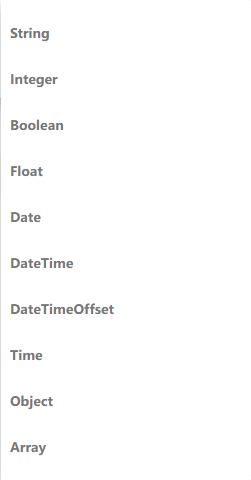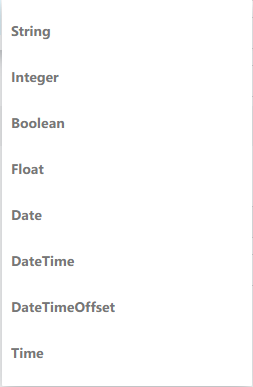Using Rest Query
The rest query query type is built to communicate with constructs designed as RestAPI. Communication here needs to be provided with JSON data.
1.In the DataSource, **'New Item' should be selected, then for type, REST Query should be selected.
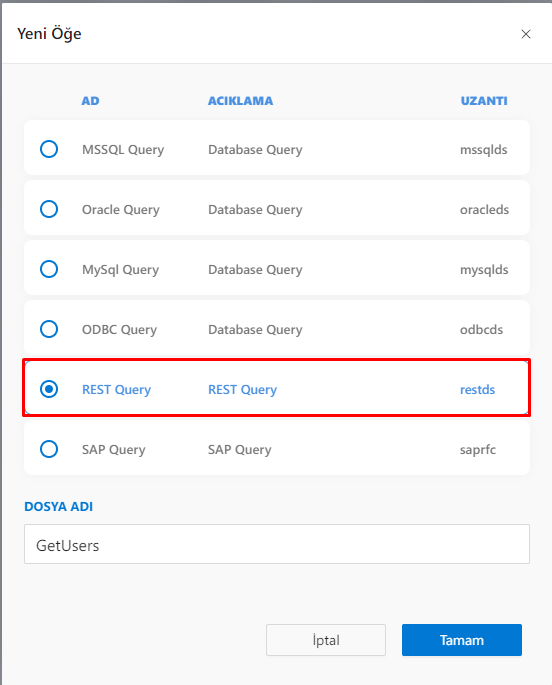
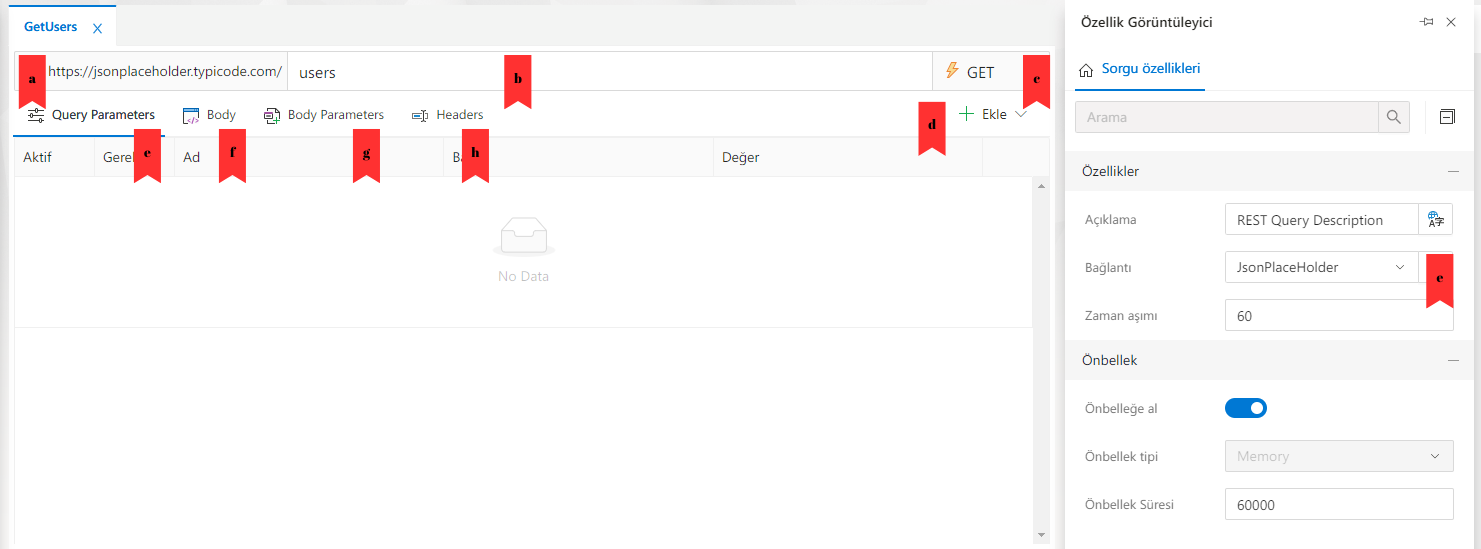
Rest Query Expressions
- a - refers to the RESTAPI address to be linked.
- b - refers to the directions specified to access the different controllers of the API address to be linked.
- c - Specifies the types of requests that can be made.
-GET
-POST
-IDOL
- COPY -DELETE -HEAD
- MERGE -OPTIONS
- PATCH
- d - It is the menu that refers to the fields that can be added to the request, the one that can be added to the one that can be added, and the expressions that can be added are as follows.

- The types of parameters that can be used for Query Parameter are as follows.
- The types of parameters that can be used for the body are as follows.
- The types of parameters that can be used for header are as follows.
- The types of parameters that can be used for Query Parameter are as follows.
- e - Used to view or edit query parameters that have been added.
- f - Used to view and edit the body of the request.
- g - Used to view and edit parameters added to the body.

- The expression **'None' is selected for use without including any body.
- The expression **'form-data' is selected for use by including form-data data.
- The expression 'Form-url-encoded' is selected for use by including the Form-url-encoded data.
- The expression **'Raw' is used in conjunction with the JSON editor to send JSON data.
- Example usage

- Parameterized example usage
- The expression to be given the parameter is defined between the double quotation expression, preceded by the at sign @.
- Add
>Body>String by saying string is added as a parameter. - The added parameter is edited in the 'Body Parameters'** section.
- The expression to be given the parameter is defined between the double quotation expression, preceded by the at sign @.
- h - Used to view and edit parameters added to Headers.
Requesting
- The request is provided by defining the request parameters and requirements. After the request is made, it will return data to the server.
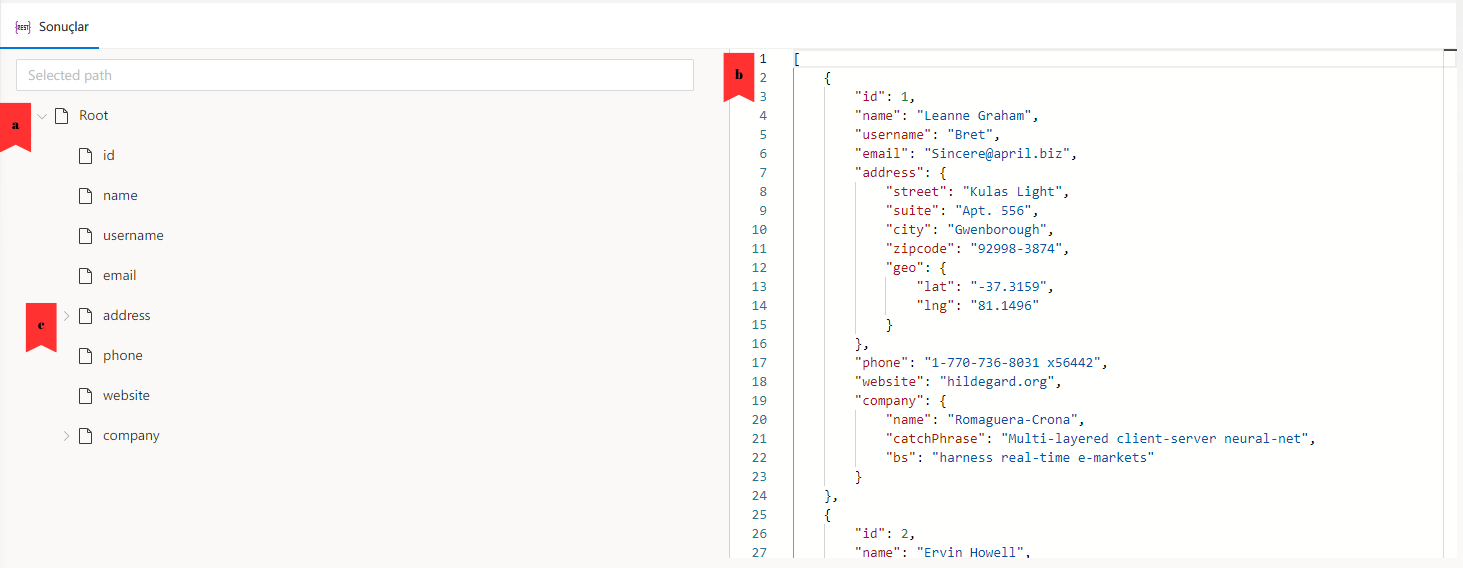
- Part a
- A map of the incoming data will appear.
- Root is selected to use all data.
- One of the domains under Root is selected for the use of a specific part of the incoming data.
- Part B
- The content of the incoming data is displayed.
- Part c
- If the incoming data contains an array or class in it, the child nodes are accessed with the **'
>' mark.
- If the incoming data contains an array or class in it, the child nodes are accessed with the **'
